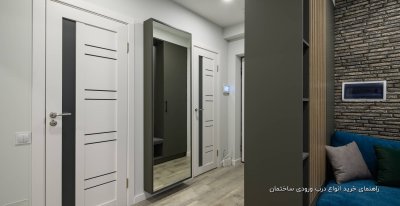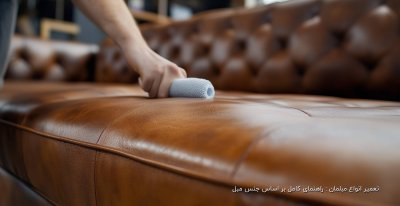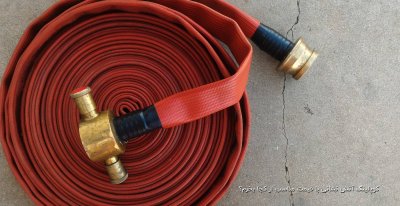AREF
مدیر انجمن های <A href="http://forum.majidonline.c
سلام
بازم طبق معمول از evermotion.org
Hello, my name is Antonio Casado and trought this tutorial I show us how to make cloth animations with 3DSMAX. In the first part we learn to make a simple cloth fall over an object, and in the second part we try to quit the cloth for show the object and animate a camera for see details of that.

Scene setup

The Scene to work in its very simple. It consist in a plane for the floor and the object to use, in this case a mini Hifi Stereo System with Speaker and remote controller.
Now we create the cloth that use in the simulation later. For that, we start creating a plane object with about 50 subdivisions, the sufficient to make an accurate and exact animation, with all the featured needed. This is the result:
Creating a circle Shape and using the ShapeMerge tool we finishing the cloth with a circled look, so more beautiful will be. Keep to clean unnecesary vertix in the edge of the edges using the WELD command in the Editable mesh/poly tab.
Now we have the basic scene, so adjust the render propierties. The render system chosen is Vray and once have setup the basic illumination scene, we can Start to play seriously ;-) PART ONE: The falling cloth

Now its time to make the simulation. For that we use a free plugin called SIMCLOTH, from the same team that VRAY (I hope that can finish the current version and make it better). This is the control panel of Simcloth. As you see, is very easy to use:
We start for positioning the cloth mesh over the object, and add the Simcloth modifier. Then select the Cloth mode. For now don�t touch nothing of the parameters.
Now select the ground plane and the object that be tapped with the cloth and again add the Simcloth modifier and select the Deflector mode to it. Again, don�t touch nothing.
To finish, we push the button START CALCULATION. Depending on the power of our computer and on the complexity of the calculations, we will be able to support the wait...or take a Coffee ;-)
Once finished the simulation, we can play the sequence in the viewport to see if we like it or not. If you like it, jump to the next point. Otherwise, we adjust the setting of the cloth. For that, I recommend to read the manual and learn better the parameters that affect the cloth and the objects, etc...
At this point, we can apply a material to our cloth. Otherwise, in the material requires UVW coordinates, its better apply it BEFORE the simulation (or go to a point under the stack and apply there the UVW Mapping). In our case, we choose a plain color with no texture coordinates. The material it�s really simple, simulating velvet. For that, only put a FallOff map in the Diffusse channel with the colors intense red in one and pinky red in other, as you see here:
At last, we can do the final touch. How we used a medium to low mesh for the simulation, is time to refine the geometry. For that we use the new TurboSmooth modifier of 3DSMAX 7 and apply 2 iterations of smooth, obtaining a good density and adding extra detail. And for last, the Shell modifier, that give a thikness extra to the cloth:
Now, we only render the sequence and enjoy the falling cloth...: Postproduction

Once the sequence is rendered, we can do to final touch. In this concrete case, we can stretch the video so we can obtain an ultra low motion animation. For this task we use Motion Perfect from Dynapel, a easy to use program that can done the stretch that we want. Only have to load the video, set a rate of 400% slow and wait to generate the video. That�s all. The slow motion effect in this case is perfect and looks pretty:
Here you can see final animation
PART TWO: Picking the cloth

Let�s go now with the opposite case, what is to quit the cloth of the object, showing it. The procedure it�s a little some complicated, but it allow us to make more complex animations with the cloth, for example, that a character pick a cloth.
So, starting with the previous scene, the better its to colapse the stack to the Simcloth modifier in tha last completed frame, and saving the scene with another name, keeping like that:
Convert the sphere to an editable poly. In the main toolbar change selection mode to window.
It�s the moment to link the cloth object with the dummy. For that, we apply the Simcloth modifier again to the cloth. Remember to set to cloth. Next, push the �+� in the Simcloth modifier to reveal the Vertex Subobject. Here is where can select vertex and assign it to another object external to it, in our case the dummy object:
We select two or three vertex coincident with the position of the dummy object, and push the button NEW. A new set appears, which have a few options. The most interesting its the �attached� opcion, so active it and push in the button for select the dummy. In this moment there vertex group are attached to the dummy:
Now it�s time to animate the dummy. We can move it in a simple movement or complex movement, here you feel free to do how you want:
It�s time to simulation, so push again the magic button �START CALCULATION� and if we have done things well, see how the cloth moves �magically�. Now it�s time to wait to finish simulation... Camera movement

To do more dinamism to our animation, we make a little camera animation, simulating the movement of a digital handycam camera. For that, first we move the camera stablishing a basic movement. For example, making zoom over the object and panning across him revealing little details, and later restoring the point of view.
The basic movement is done, but we missed these �micromovement� that normally have the handycam cameras. For that, first select the camera TARGET and go to Motion Tab. There we change the default controller for the POSITION LIST controller. So, we don�t miss the previous animation of the camera target, and can done layers of movements:
So, we select the layer �available� and assign a new controller, NOISE CONTROLLER. Adjust these controller while play the sequence for fine tune the settings and find a small vibratory movement:
We have the fine movement of the target, so now select the camera and do the same operation, but ONLY in the ROLL channel of the camera. In this case the position list controller its not needed, only the noise controller.
And with that, we have finished the camera animation. Now it�s time to render the sequence, make the video, and enjoy!:
بازم طبق معمول از evermotion.org
Hello, my name is Antonio Casado and trought this tutorial I show us how to make cloth animations with 3DSMAX. In the first part we learn to make a simple cloth fall over an object, and in the second part we try to quit the cloth for show the object and animate a camera for see details of that.

Scene setup

The Scene to work in its very simple. It consist in a plane for the floor and the object to use, in this case a mini Hifi Stereo System with Speaker and remote controller.

Now we create the cloth that use in the simulation later. For that, we start creating a plane object with about 50 subdivisions, the sufficient to make an accurate and exact animation, with all the featured needed. This is the result:

Creating a circle Shape and using the ShapeMerge tool we finishing the cloth with a circled look, so more beautiful will be. Keep to clean unnecesary vertix in the edge of the edges using the WELD command in the Editable mesh/poly tab.

Now we have the basic scene, so adjust the render propierties. The render system chosen is Vray and once have setup the basic illumination scene, we can Start to play seriously ;-) PART ONE: The falling cloth

Now its time to make the simulation. For that we use a free plugin called SIMCLOTH, from the same team that VRAY (I hope that can finish the current version and make it better). This is the control panel of Simcloth. As you see, is very easy to use:

We start for positioning the cloth mesh over the object, and add the Simcloth modifier. Then select the Cloth mode. For now don�t touch nothing of the parameters.
Now select the ground plane and the object that be tapped with the cloth and again add the Simcloth modifier and select the Deflector mode to it. Again, don�t touch nothing.
To finish, we push the button START CALCULATION. Depending on the power of our computer and on the complexity of the calculations, we will be able to support the wait...or take a Coffee ;-)

Once finished the simulation, we can play the sequence in the viewport to see if we like it or not. If you like it, jump to the next point. Otherwise, we adjust the setting of the cloth. For that, I recommend to read the manual and learn better the parameters that affect the cloth and the objects, etc...
At this point, we can apply a material to our cloth. Otherwise, in the material requires UVW coordinates, its better apply it BEFORE the simulation (or go to a point under the stack and apply there the UVW Mapping). In our case, we choose a plain color with no texture coordinates. The material it�s really simple, simulating velvet. For that, only put a FallOff map in the Diffusse channel with the colors intense red in one and pinky red in other, as you see here:

At last, we can do the final touch. How we used a medium to low mesh for the simulation, is time to refine the geometry. For that we use the new TurboSmooth modifier of 3DSMAX 7 and apply 2 iterations of smooth, obtaining a good density and adding extra detail. And for last, the Shell modifier, that give a thikness extra to the cloth:

Now, we only render the sequence and enjoy the falling cloth...: Postproduction

Once the sequence is rendered, we can do to final touch. In this concrete case, we can stretch the video so we can obtain an ultra low motion animation. For this task we use Motion Perfect from Dynapel, a easy to use program that can done the stretch that we want. Only have to load the video, set a rate of 400% slow and wait to generate the video. That�s all. The slow motion effect in this case is perfect and looks pretty:
Here you can see final animation
PART TWO: Picking the cloth

Let�s go now with the opposite case, what is to quit the cloth of the object, showing it. The procedure it�s a little some complicated, but it allow us to make more complex animations with the cloth, for example, that a character pick a cloth.
So, starting with the previous scene, the better its to colapse the stack to the Simcloth modifier in tha last completed frame, and saving the scene with another name, keeping like that:

Convert the sphere to an editable poly. In the main toolbar change selection mode to window.

It�s the moment to link the cloth object with the dummy. For that, we apply the Simcloth modifier again to the cloth. Remember to set to cloth. Next, push the �+� in the Simcloth modifier to reveal the Vertex Subobject. Here is where can select vertex and assign it to another object external to it, in our case the dummy object:

We select two or three vertex coincident with the position of the dummy object, and push the button NEW. A new set appears, which have a few options. The most interesting its the �attached� opcion, so active it and push in the button for select the dummy. In this moment there vertex group are attached to the dummy:

Now it�s time to animate the dummy. We can move it in a simple movement or complex movement, here you feel free to do how you want:

It�s time to simulation, so push again the magic button �START CALCULATION� and if we have done things well, see how the cloth moves �magically�. Now it�s time to wait to finish simulation... Camera movement

To do more dinamism to our animation, we make a little camera animation, simulating the movement of a digital handycam camera. For that, first we move the camera stablishing a basic movement. For example, making zoom over the object and panning across him revealing little details, and later restoring the point of view.

The basic movement is done, but we missed these �micromovement� that normally have the handycam cameras. For that, first select the camera TARGET and go to Motion Tab. There we change the default controller for the POSITION LIST controller. So, we don�t miss the previous animation of the camera target, and can done layers of movements:

So, we select the layer �available� and assign a new controller, NOISE CONTROLLER. Adjust these controller while play the sequence for fine tune the settings and find a small vibratory movement:

We have the fine movement of the target, so now select the camera and do the same operation, but ONLY in the ROLL channel of the camera. In this case the position list controller its not needed, only the noise controller.
And with that, we have finished the camera animation. Now it�s time to render the sequence, make the video, and enjoy!:











